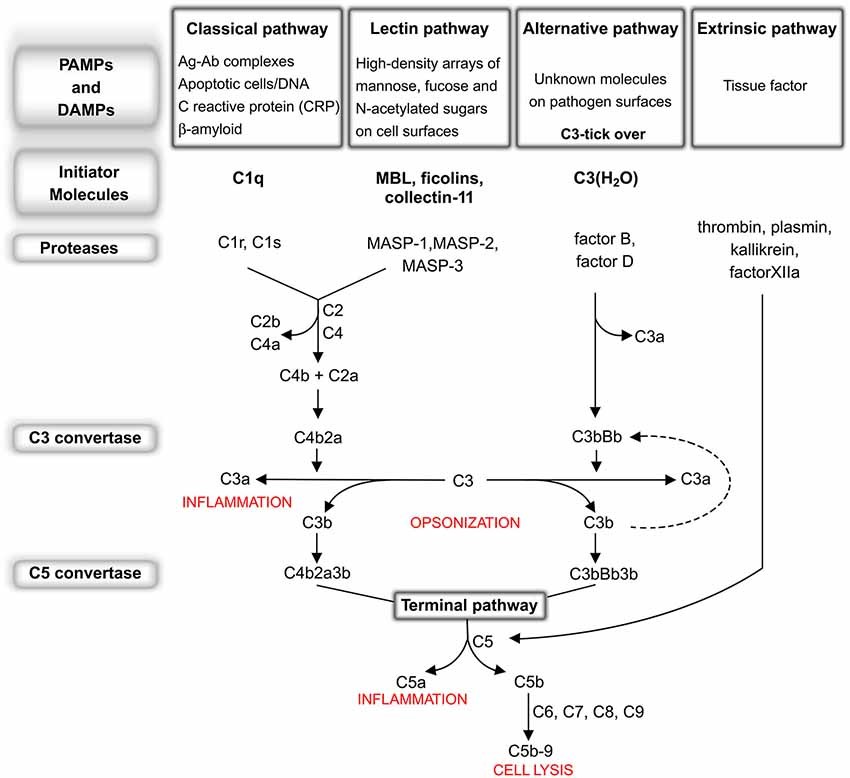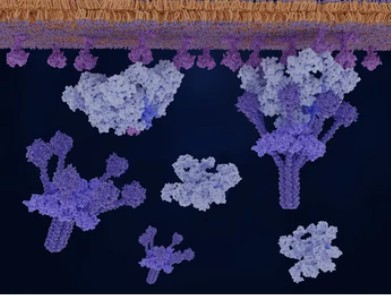Classical Complement Pathway
Related Symbol Search List
Immunology Background
About Classical Complement Pathway
The classical complement pathway is one of the three activation pathways (alongside the alternative and lectin pathways) that constitute the complement system, an important component of the innate immune system. The complement system acts as a defense mechanism against invading pathogens, helps clear immune complexes, and promotes inflammation.
The classical complement pathway is primarily activated by the binding of specific antibodies, predominantly immunoglobulin G (IgG) or immunoglobulin M (IgM), to target antigens on the surface of pathogens. It can also be activated by certain non-antibody molecules, such as C-reactive protein.
The activation of the classical complement pathway involves a cascade of proteolytic reactions. When antibodies bind to antigens on a pathogen's surface, they undergo conformational changes that expose a binding site for the first component of the classical pathway, C1q. C1q then binds to the antibody-antigen complex, forming the C1 complex.
The C1 complex consists of C1q and two enzymatic subunits, C1r and C1s. Upon binding, C1r undergoes autoactivation and cleaves C1s, generating active C1s protease. This activated C1s initiates a proteolytic cascade by cleaving C4 into C4a and C4b fragments. The C4b fragment covalently attaches to the pathogen's surface, marking it for destruction.
Next, C4b binds to another complement protein, C2, forming the C4bC2 complex. C1s then cleaves C2, generating C2a and C2b fragments. The resulting C4bC2a complex is called the classical pathway C3 convertase. This C3 convertase cleaves the central complement protein, C3, into C3a and C3b fragments.
C3b can covalently attach to the pathogen's surface or nearby surfaces, promoting opsonization. C3b also binds to the C4bC2a complex, forming the C4bC2aC3b complex, which is the classical pathway C5 convertase. This C5 convertase cleaves C5 into C5a and C5b fragments.
The cleavage of C5 initiates the terminal pathway of the complement system, leading to the formation of the membrane attack complex (MAC). The MAC creates pores on the pathogen's surface, disrupting its integrity and causing cell lysis.
Additionally, the activation of the classical complement pathway generates potent inflammatory mediators, such as C3a and C5a, which recruit and activate immune cells, enhancing the immune response against pathogens.
The classical complement pathway plays a critical role in host defense against pathogens, particularly those targeted by specific antibodies. It promotes phagocytosis, opsonization, inflammation, and the elimination of pathogens. However, dysregulation or excessive activation of the classical complement pathway can contribute to autoimmune diseases, tissue damage, and inflammatory disorders.
 Fig.1 The complement system: an overview. (Orsini F, et al., 2014)
Fig.1 The complement system: an overview. (Orsini F, et al., 2014)
Classical pathway (CP): C1q, the CP initiator, recognizes and binds antigen-antibody complexes or specific molecules, including β-amyloid, C reactive protein (CRP), DNA and apoptotic bodies. After binding, the C1r and C1s proteases subsequently cleave C4 and C2 to generate C4a, C4b, C2a, C2b, permitting the formation of C4b2a (CP C3 convertase). This complex cleaves C3 into C3a, which, in turn, acts as potent anaphylatoxin, and C3b that binds to the complex forming the C4b2a3b protein block (CP C5 convertase).
Physiological Functions of Classical Complement Pathway
The classical complement pathway, as part of the complement system, serves several important physiological functions in the body. Here are some key functions of the classical complement pathway:
Opsonization: The classical complement pathway helps in the opsonization of foreign pathogens such as bacteria, viruses, and fungi. Opsonization is the process by which antibodies bind to pathogens and tag them for destruction by immune cells such as phagocytes.
Neutralization of Pathogens: The classical complement pathway can directly neutralize pathogens by binding to and inactivating them. This prevents the pathogens from infecting host cells and spreading further.
Cytolysis: The classical complement pathway can lead to the lysis (bursting) of pathogens, particularly bacteria, by forming a membrane attack complex (MAC). The MAC creates pores in the pathogen's membrane, causing it to rupture and die.
Inflammatory Response: The activation of the classical complement pathway triggers an inflammatory response. This is important for recruiting immune cells to the site of infection or injury, promoting vasodilation (widening of blood vessels), and enhancing the permeability of blood vessels to allow immune cells and molecules to enter the infected area.
Clearance of Immune Complexes: The classical complement pathway helps in the clearance of immune complexes formed during immune responses. Immune complexes are formed when antibodies bind to antigens, and they can be potentially harmful if they accumulate in tissues. The classical pathway helps in the recognition and clearance of these immune complexes by immune cells.

Available Resources for Classical Complement Pathway
At Creative BioMart, we specialize in supplying a wide array of products linked to the classical complement pathway, including recombinant proteins. Whether you're a researcher in academia or the biopharmaceutical industry, we offer tailored services to meet your specific needs. Furthermore, alongside our diverse product range and services, we provide a plethora of resources covering various aspects of the classical complement pathway, spanning involved pathways, protein functions, interacting proteins, articles, research areas, and related topics. These resources are crafted to enhance comprehension and facilitate the practical application of knowledge related to the classical complement pathway. Our commitment at Creative BioMart is to fully support your research and development pursuits in the realm of the classical complement pathway. We invite you to explore our products, benefit from our customized services, and harness our extensive resources to advance your scientific endeavors.
Our Featured Products
- Recombinant Human C3, His-tagged
- Active Recombinant Human C3 protein, His-tagged
- Recombinant Rabbit C3 Protein
- Recombinant Swine C3 Protein
- Recombinant Human C3AR1 protein, His-tagged
- Active Recombinant Human C5 protein
- Recombinant Human C5, His-tagged
- Recombinant Human C9, GST-tagged
- Recombinant Human ISM2, GST-tagged
- Recombinant Human C1QA, GST-tagged
- Recombinant Human C1QB, His tagged
- Recombinant Human C1QBP, GST-tagged
- Recombinant Human C1QBP protein, His-tagged
- Recombinant Mouse C1qbp protein, His-tagged
- Recombinant Human C1QTNF5 Protein, His-tagged
- Recombinant Human C2, His tagged
- Recombinant Human C4BPB, His-tagged
- Recombinant Human C7 protein, His-tagged
- Recombinant Human CLU, His tagged
- Recombinant Human CLU, GST-tagged
- Recombinant Human CLU protein, His-tagged
- Recombinant Mouse Clu protein, His-tagged
- Recombinant Human CRP protein, His-tagged
- Recombinant Mouse Crp, His tagged
- Recombinant Rat Crp, His tagged
- Recombinant Human VSIG4, His tagged
- Recombinant Mouse Vsig4 protein, His&hFc-tagged
If you have any questions, requirements, or cooperation intentions, please feel free to contact us. We very much look forward to working with you and helping you achieve research and commercial success.
References:
- Orsini F, De Blasio D, Zangari R, Zanier ER, De Simoni MG. Versatilit of the complement system in neuroinflammation, neurodegeneration and brain homeostasis [published correction appears in Front Cell Neurosci. 2015;9:263]. Front Cell Neurosci. 2014;8:380.
- Garcia BL, Zwarthoff SA, Rooijakkers SH, Geisbrecht BV. Novel Evasion Mechanisms of the Classical Complement Pathway. J Immunol. 2016;197(6):2051-2060. doi:10.4049/jimmunol.1600863

